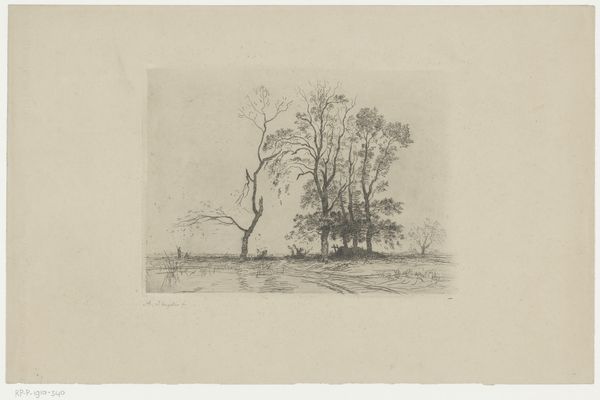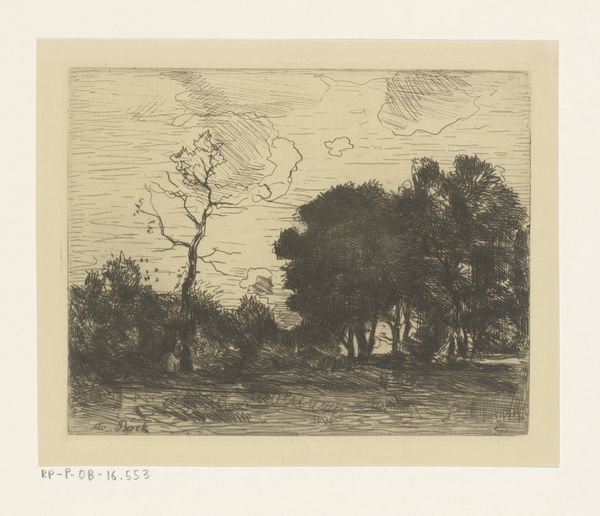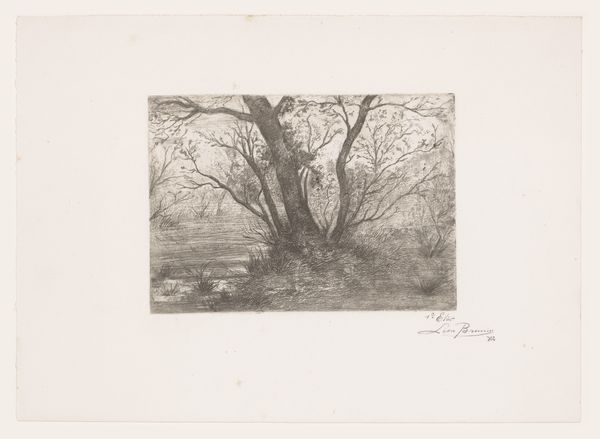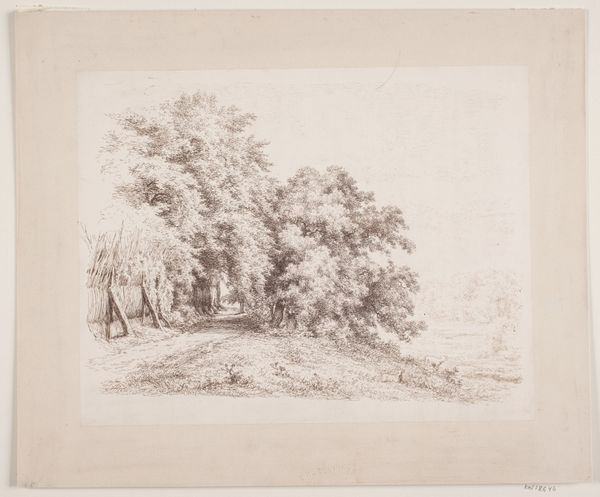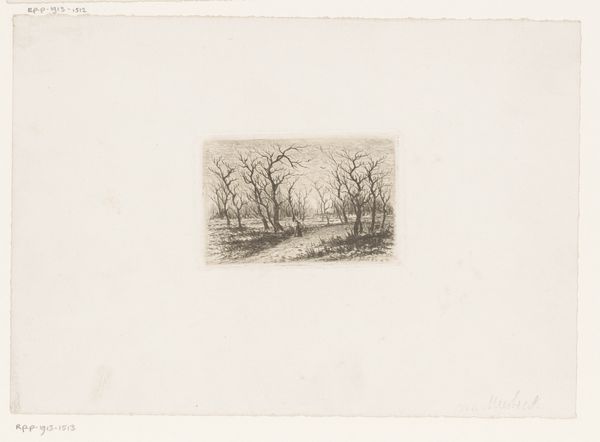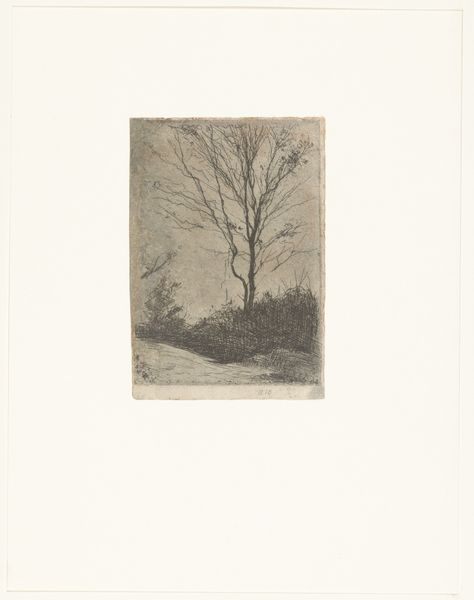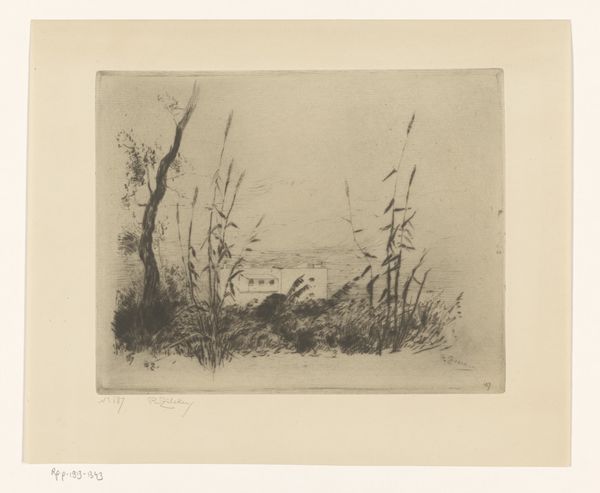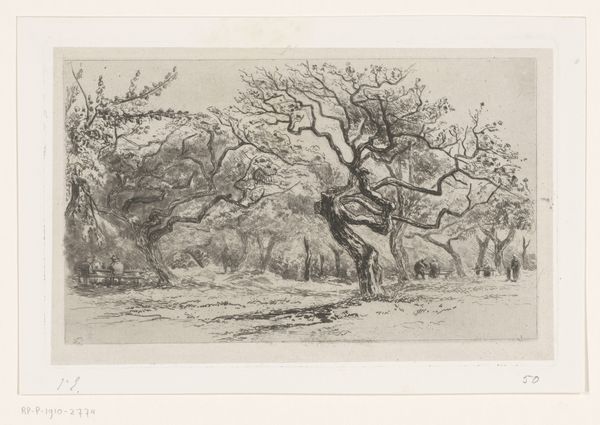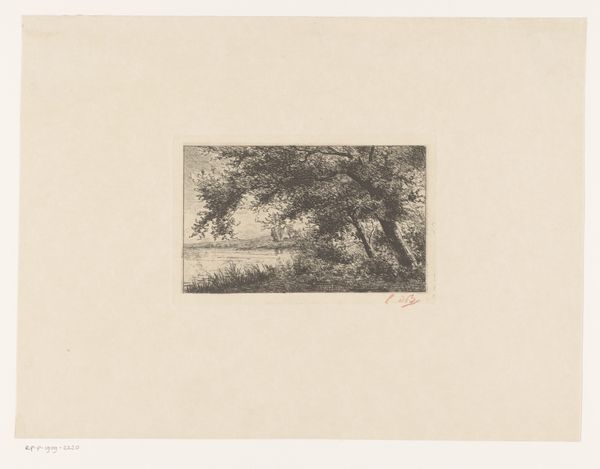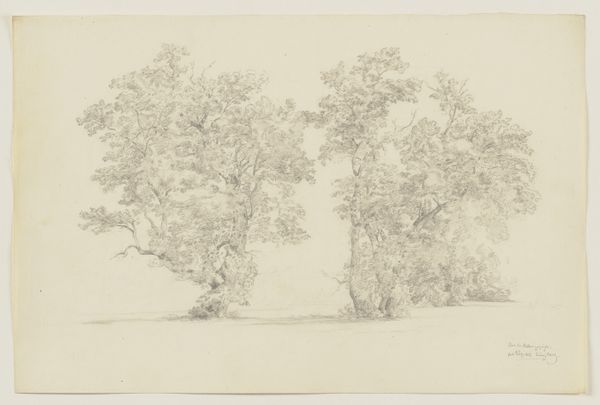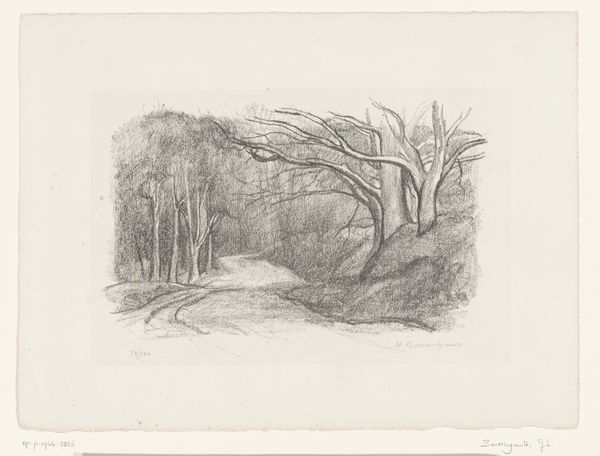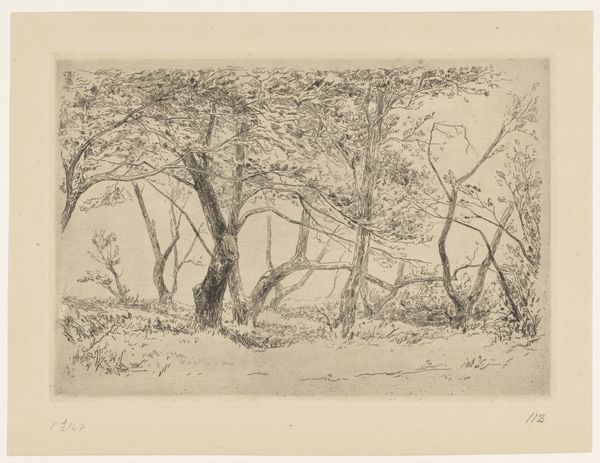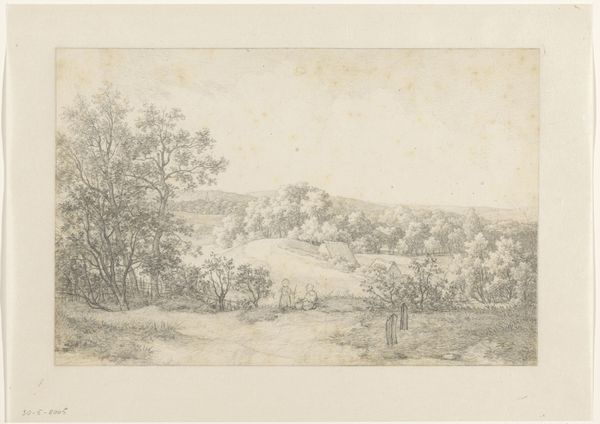
Dimensions: height 263 mm, width 356 mm
Copyright: Rijks Museum: Open Domain
Editor: So, this is Gerard Bilders’ "Bosgezicht bij Oosterbeek," likely created between 1848 and 1865. It’s a pencil drawing of a forest scene, currently housed in the Rijksmuseum. It’s incredibly subtle and peaceful. What do you see in this piece? Curator: I see a landscape pregnant with the social and political undercurrents of its time. This seemingly quiet forest becomes a stage for understanding the burgeoning Dutch identity and its complex relationship with nature during a period of intense nationalism. Editor: How so? It just seems like a pleasant scene. Curator: Look closer. Notice how the controlled pencil strokes, though depicting a ‘natural’ scene, also represent an act of claiming, defining, and possessing the land through art. Consider, too, the legacy of colonialism – can the romantic idealization of untouched nature exist independently of those historical forces? Editor: That's a perspective I hadn't considered. Is it possible that such a seemingly apolitical image can somehow engage with this? Curator: Absolutely. Bilders, part of the Hague School, contributed to constructing a national narrative heavily reliant on landscape. We have to ask: Whose stories are validated through these idealized portrayals? Who benefits from these romantic landscapes? Who is written out? Editor: That really changes how I look at it. I'm not sure I'll ever see landscapes the same way again. Curator: Precisely! By questioning the narratives presented by landscapes, we confront broader issues of representation, power, and historical consciousness. Editor: This makes you realise there’s always more than what meets the eye. Thank you.
Comments
No comments
Be the first to comment and join the conversation on the ultimate creative platform.
